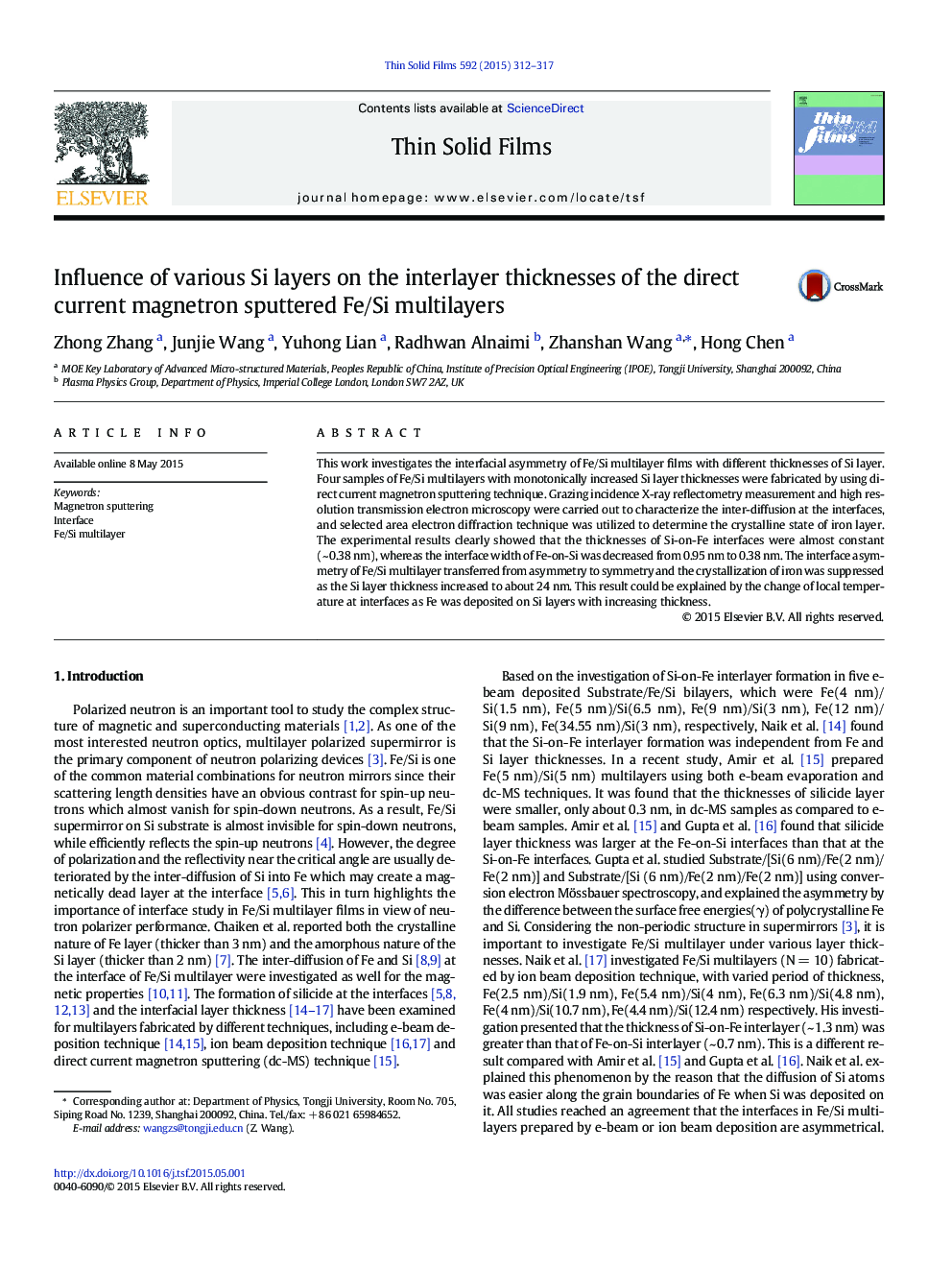| کد مقاله | کد نشریه | سال انتشار | مقاله انگلیسی | نسخه تمام متن |
|---|---|---|---|---|
| 1664560 | 1008760 | 2015 | 6 صفحه PDF | دانلود رایگان |

• The thickness of Fe-on-Si interface decreases as the Si layer is thicker.
• The thickness of Si-on-Fe interface keeps constant as the Si layer is thicker.
• The crystallization of Fe is suppressed as the Si layer thickness increases.
• These results may be due to changes in local temperature.
This work investigates the interfacial asymmetry of Fe/Si multilayer films with different thicknesses of Si layer. Four samples of Fe/Si multilayers with monotonically increased Si layer thicknesses were fabricated by using direct current magnetron sputtering technique. Grazing incidence X-ray reflectometry measurement and high resolution transmission electron microscopy were carried out to characterize the inter-diffusion at the interfaces, and selected area electron diffraction technique was utilized to determine the crystalline state of iron layer. The experimental results clearly showed that the thicknesses of Si-on-Fe interfaces were almost constant (~ 0.38 nm), whereas the interface width of Fe-on-Si was decreased from 0.95 nm to 0.38 nm. The interface asymmetry of Fe/Si multilayer transferred from asymmetry to symmetry and the crystallization of iron was suppressed as the Si layer thickness increased to about 24 nm. This result could be explained by the change of local temperature at interfaces as Fe was deposited on Si layers with increasing thickness.
Journal: Thin Solid Films - Volume 592, Part B, 1 October 2015, Pages 312–317